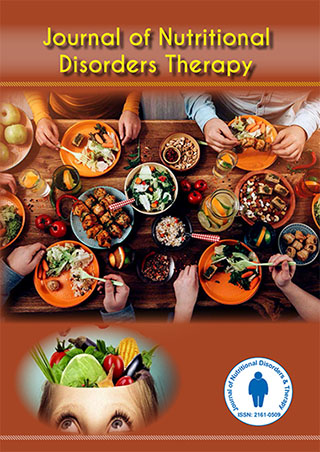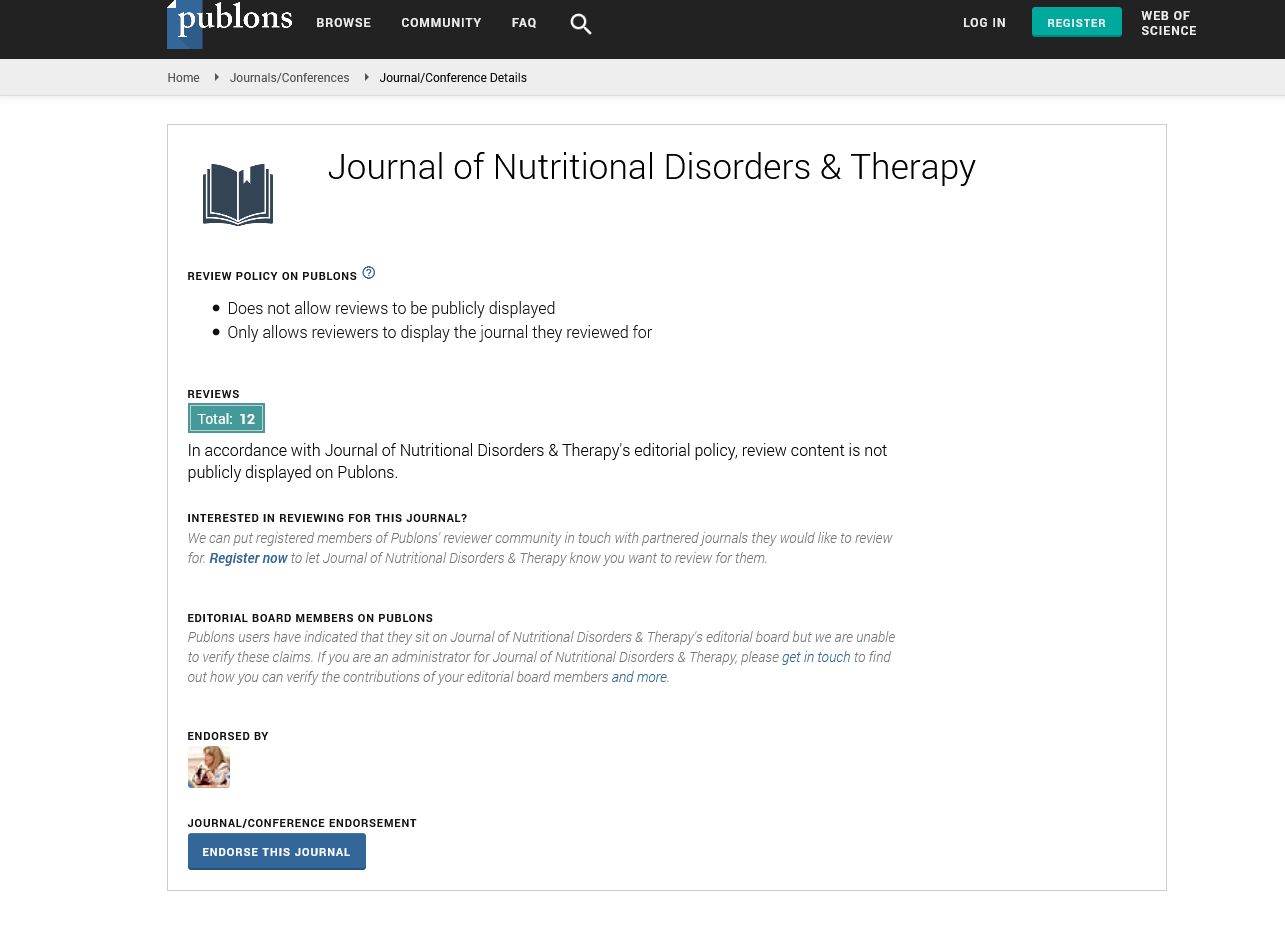Indexed In
- Open J Gate
- Genamics JournalSeek
- Academic Keys
- JournalTOCs
- Ulrich's Periodicals Directory
- RefSeek
- Hamdard University
- EBSCO A-Z
- OCLC- WorldCat
- Publons
- Geneva Foundation for Medical Education and Research
- Euro Pub
Useful Links
Share This Page
Journal Flyer

Open Access Journals
- Agri and Aquaculture
- Biochemistry
- Bioinformatics & Systems Biology
- Business & Management
- Chemistry
- Clinical Sciences
- Engineering
- Food & Nutrition
- General Science
- Genetics & Molecular Biology
- Immunology & Microbiology
- Medical Sciences
- Neuroscience & Psychology
- Nursing & Health Care
- Pharmaceutical Sciences
Perspective - (2025) Volume 15, Issue 1
Advances in Medical Management Strategies for Obesity
Helene Bays*Received: 25-Feb-2025, Manuscript No. JNDT-25-29114; Editor assigned: 27-Feb-2025, Pre QC No. JNDT-25-29114 (PQ); Reviewed: 13-Mar-2025, QC No. JNDT-25-29114; Revised: 20-Mar-2025, Manuscript No. JNDT-25-29114 (R); Published: 27-Mar-2025, DOI: 10.35248/2161-0509.25.15.318
Description
Obesity affects over 650 million adults and 124 million children and adolescents worldwide. It is recognized not only as a consequence of energy imbalance but also as a complex interplay of genetic, environmental, behavioral and hormonal factors. Despite increased awareness, global rates continue to rise, placing strain on healthcare systems and increasing the burden of non-communicable diseases.
While lifestyle modifications remain a core approach, the need for effective medical therapies has intensified. Over the past decade, research has produced new treatment options that offer measurable improvements in weight reduction and metabolic health. Understanding the mechanisms, clinical outcomes and societal implications of these therapies is essential for guiding future interventions and policies.
Medical therapies for obesity
Medical treatment is often considered when lifestyle interventions alone are insufficient. Several pharmacologic agents have been approved for use in individuals with a Body Mass Index (BMI) with obesity-related complications. Recent innovations target multiple pathways involved in appetite regulation, fat metabolism and glucose control.
Societal impacts of novel therapies
Healthcare costs: Obesity imposes direct costs through treatment of associated illnesses and indirect costs through lost productivity. Effective weight management therapies could reduce overall healthcare expenditure by decreasing the incidence of complications such as diabetes, cardiovascular disease and stroke.
Access and equity: Access to newer medications may be limited by cost, insurance coverage and geographic availability. Ensuring equitable access across socio-economic groups is a public health priority. Without this, disparities in obesity-related outcomes may persist or widen.
Public perception and stigma: The emergence of effective medical treatments may shift public understanding of obesity from a lifestyle issue to a medical condition with biological underpinnings. Reducing stigma through education and policy could improve treatment uptake and patient engagement.
Policy and prevention
Medical treatments, while important, should not replace primary prevention efforts. Policy strategies that support healthy food environments, physical activity and early-life nutrition are essential to reduce obesity incidence.
Governments, healthcare systems and communities play key roles in implementing policies that promote regulated food marketing to children, urban planning that supports active transportation, front-of-package nutritional labeling and school-based health programs.
These measures create environments that support healthier choices, potentially reducing the need for medical intervention.
Research directions
Further studies are needed to evaluate long-term safety and effectiveness of newer agents, identify predictors of treatment response, explore combinations of medications for additive benefits and understand metabolic effects beyond weight loss.
Additionally, studies should include diverse populations to ensure findings are applicable across ethnic and socioeconomic groups.
Obesity management is evolving with the development of more effective pharmacologic options. These therapies act on metabolic, hormonal and behavioral pathways to support weight loss and improve related health outcomes. While they offer new opportunities for individuals struggling with obesity, access, affordability and long-term integration into care models remain challenges. A comprehensive approach that combines medical treatment with prevention, behavioral support and health policy will be key to addressing obesity in a sustainable and equitable way.
Citation: Bays H (2025). Advances in Medical Management Strategies for Obesity. J Nutr Disord Ther. 15:318.
Copyright: © 2025 Bays H. This is an open-access article distributed under the terms of the Creative Commons Attribution License, which permits unrestricted use, distribution, and reproduction in any medium, provided the original author and source are credited.

